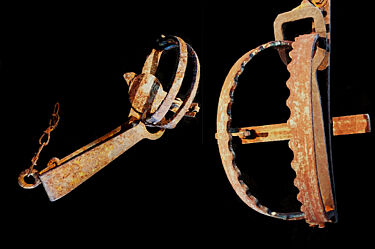
Object of the month: Traps from the 1940s
Trap or leghold trap is a capture device, which contains of two pieces of metal that collapses under great pressure when the trap is triggered. These two metal-pieces - often shaped as saw-teeth, are stretched with a powerful spring, that is triggered by a pressure plate mechanism as the animal stepping on it. The leghold trap is attached to a tree or something similar, to prevent the animal to run away with the trap attached to the foot. These kind of traps inflicts the animals great suffering in form of injuries. In Norway, law forbade hunting with leghold traps in 1932. These two leghold traps here are dated to 1940. Even though it is forbidden to hunt with leghold traps, it is still legal to import fur captured by this method.
In the USA, Canada and elsewhere, they are still hunting for wolves with leghold traps. The method is consider effective, especially in the wilderness. They also use softer traps, with rubber coating, which is called "soft-catch." Those kind of traps is consider to be more humane and they also use it in research catch. The traps are applied around a bait that is either deployed or the residue of a wolf-killed animal.
Ann-Silje Ingebrigtsen - collection staff